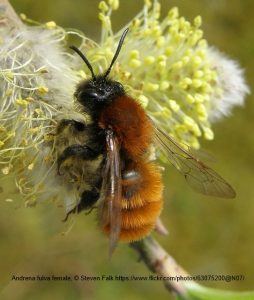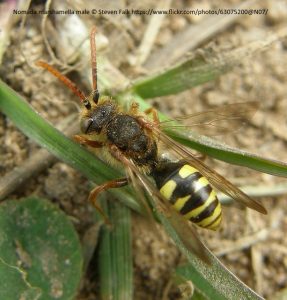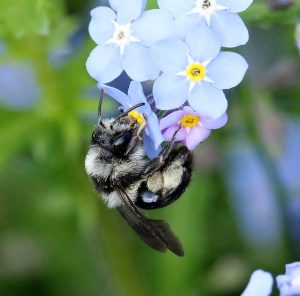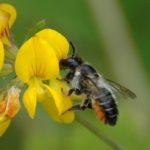



- 95% of the worlds 20,000 species of bee are solitary rather than social bees. Ireland has over 100 bee species, of which 80 are solitary bees.
- Solitary bees do not form colonies with a queen and workers, like bumblebees or honey bees. Each female makes her own small nest. Within each cell, she lays a fertilised egg and leaves a food reserve composed of regurgitated nectar and pollen. The larvae feed on the provisioned food before pupating and spending the winter hibernating to emerge as adults the next year.
- Solitary bees look very different from bumblebees. They are much smaller and occur in a range of different shapes and colours. Some species are small and black like ants with wings, while others have black and yellow striped bodies like wasps
- Irish solitary species nest in various different ways. Leafcutter solitary bees cut circular pieces out of leaves with their teeth and carry them back to line their nests, often in hollowed out twigs or bamboo canes. Mining solitary bees make their nests by digging holes in the ground. One solitary species called Osmia aurulenta lives in sand dunes and will only nest in empty snail shells
- Climate change will bring new solitary species to our shores. Since 2015 the following species have been recorded in Ireland for the first time: Wool Carder Bee, Tree Bumblebee, Ivy Bee, Hairy-footed Flower Bee
© 2025 All-Ireland Pollinator Plan | Web Design Vitamin Creative Ltd.




